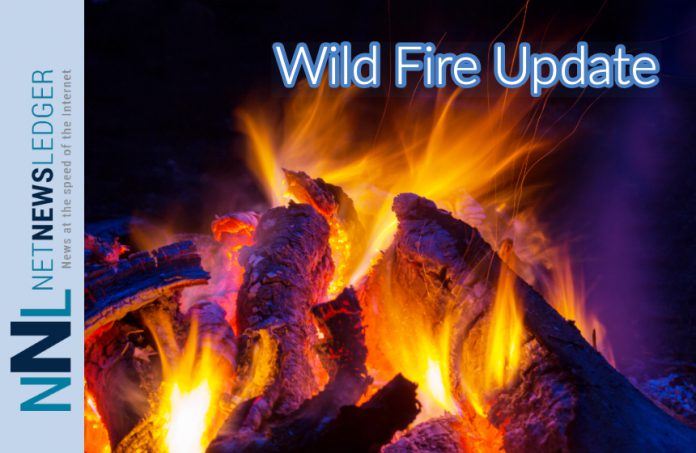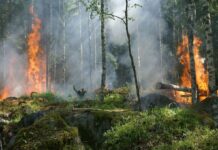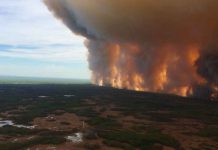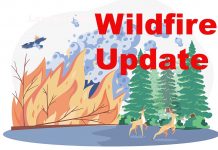Fuelled by searing temperatures and high winds, more than 200 fires are burning across the southeastern states of New South Wales and Victoria, threatening several towns
By Jill Gralow and Sonali Paul
BATEMANS BAY, Australia/MELBOURNE (Reuters) – Tens of thousands of holidaymakers fled seaside towns on Australia’s east coast on Thursday as bushfires approached, and military ships and helicopters began rescuing thousands more trapped by the blazes.
Fuelled by searing temperatures and high winds, more than 200 fires are burning across the southeastern states of New South Wales (NSW) and Victoria, threatening several towns.
The NSW state government declared a state of emergency, beginning on Friday, giving authorities the power to forcibly evacuate people and take control of services.
“It is hell on earth. It is the worst anybody’s ever seen,” Michelle Roberts said by telephone from the Croajingolong Cafe she owns in Mallacoota, a southeastern coastal town where 4,000 residents and visitors have been stranded on the beach since Monday night.
Roberts hoped to get her 18-year-old daughter onto a naval ship, which arrived off the town on Thursday, in order to escape the fires and thick smoke engulfing the town.
The HMAS Choules is expected to make two or three voyages over the coming days, state authorities said.
Elsewhere, long queues formed outside supermarkets and petrol stations as residents and tourists sought supplies to either bunker down or escape the fires, emptying shelves of staples like bread and milk.
More than 50,000 people were without power and some towns had no access to drinking water.
“Everyone’s just on edge,” said Shane Flanagan, a resident of Batemans Bay on the NSW coast.
Authorities urged a mass exodus from several towns on the southeast coast, an area popular with tourists during the summer holiday season, warning that extreme heat forecast for the weekend will further stoke the fires.
“The priority today is fighting fires and evacuating, getting people to safety,” Prime Minister Scott Morrison told reporters in Sydney. “There are parts of both Victoria and New South Wales which have been completely devastated, with a loss of power and communications.”
Eight people have been killed by wildfires in NSW and Victoria since Monday and 18 are missing, officials said on Thursday.
Temperatures are forecast to soar above 40 degrees Celsius (104 degrees Fahrenheit) along the south coast on Saturday, bringing the prospect of renewed firefronts to add to the around 200 current blazes.
“It is going to be a very dangerous day. It’s going to be a very difficult day,” NSW Rural Fire Service (RFS) Commissioner Shane Fitzsimmons said.
Following are highlights of what is happening across Australia:
* Naval officials said they would open registration for evacuation on Thursday afternoon, with the HMAS Choules able to carry up to 1,000 people on the first trip.
* “It’s 16-17 hours to the closest boat port, then we’ve got to come back,” HMAS Choules Commander Scott Houlihan said on Thursday afternoon. He said that leaving by boat was the only way out of the town.
* Thousands of people had already been evacuated from the adjoining region of East Gippsland in Victoria, one of the largest such operations in the country since the northern city of Darwin evacuated over 35,000 people in the aftermath of cyclone Tracy in 1974.
* Five military helicopters were en route to the south coast to back up firefighters and bring in supplies like water and diesel, the Australian Defence Force said. The aircraft will also be used to evacuate injured, elderly and young people.
* A contingent of 39 firefighters from North America landed in Melbourne, bringing the number of U.S. and Canadian experts who have flown in to help deal with the crisis to almost 100.
* Traffic on the main highway out of Batemans Bay on the NSW coast was bumper-to-bumper after authorities called for the town to be evacuated. Residents of the town reported there was no fuel, power or phone service, while supermarket shelves had been stripped bare of staples.
* NSW’s Kosciuszko National Park, home to the Snowy Mountains, was closed and visitors were ordered to leave due to extreme danger of fire.
* Morrison urged those waiting for help and those stuck in traffic jams “to be patient … help will arrive.”
* Morrison, forced to defend his government’s limited action on climate change, blamed a three-year drought and lack of hazard reduction for the unprecedented extent and duration of this year’s bushfires.
* Bushfires so far this season have razed more than 4 million hectares (10 million acres) of bushland and destroyed more than 1,000 homes, including 381 homes destroyed on the south coast this week.
(Reporting by Sonali Paul in Melbourne and Jill Gralow in Batemans Bay; Editing by Jane Wardell, Neil Fullick and Mike Collett-White)







